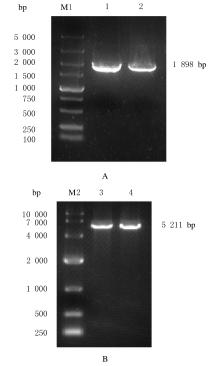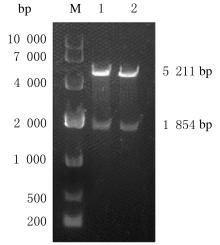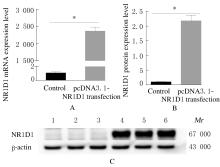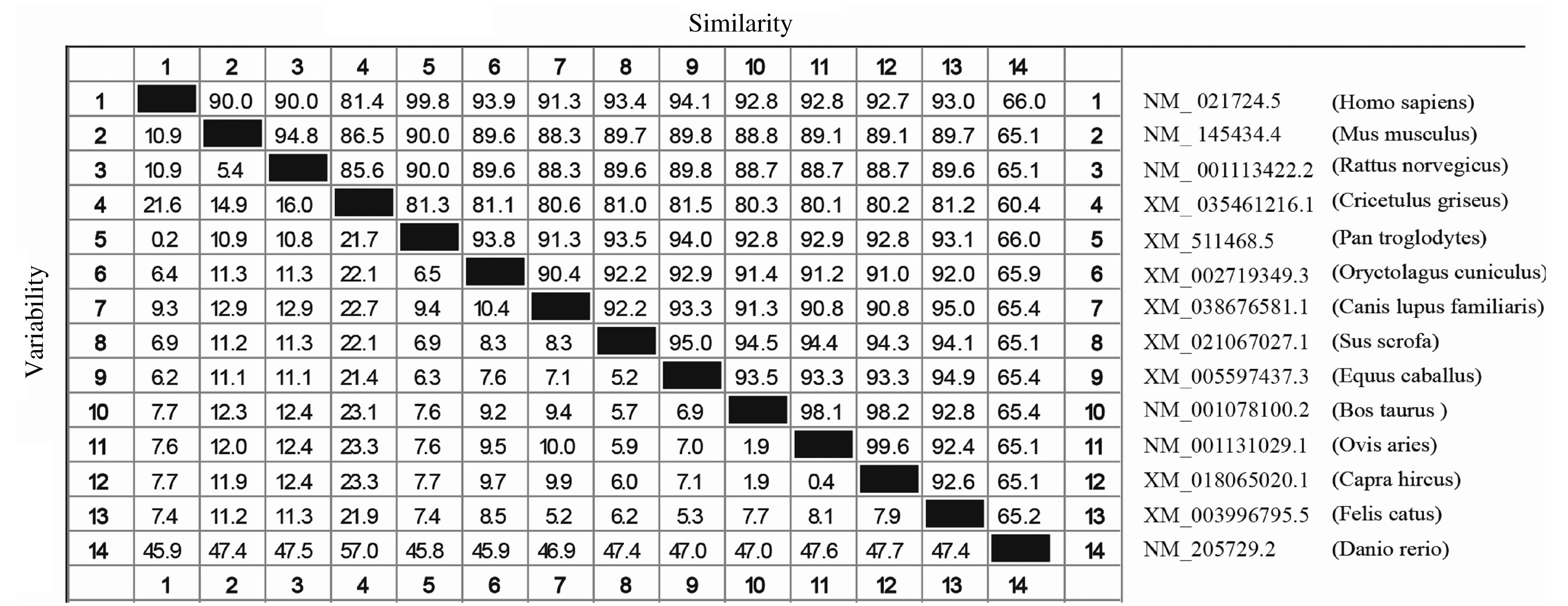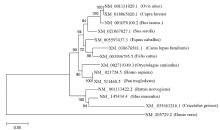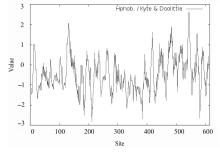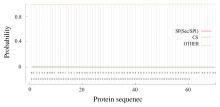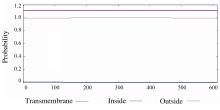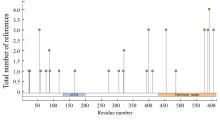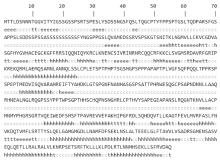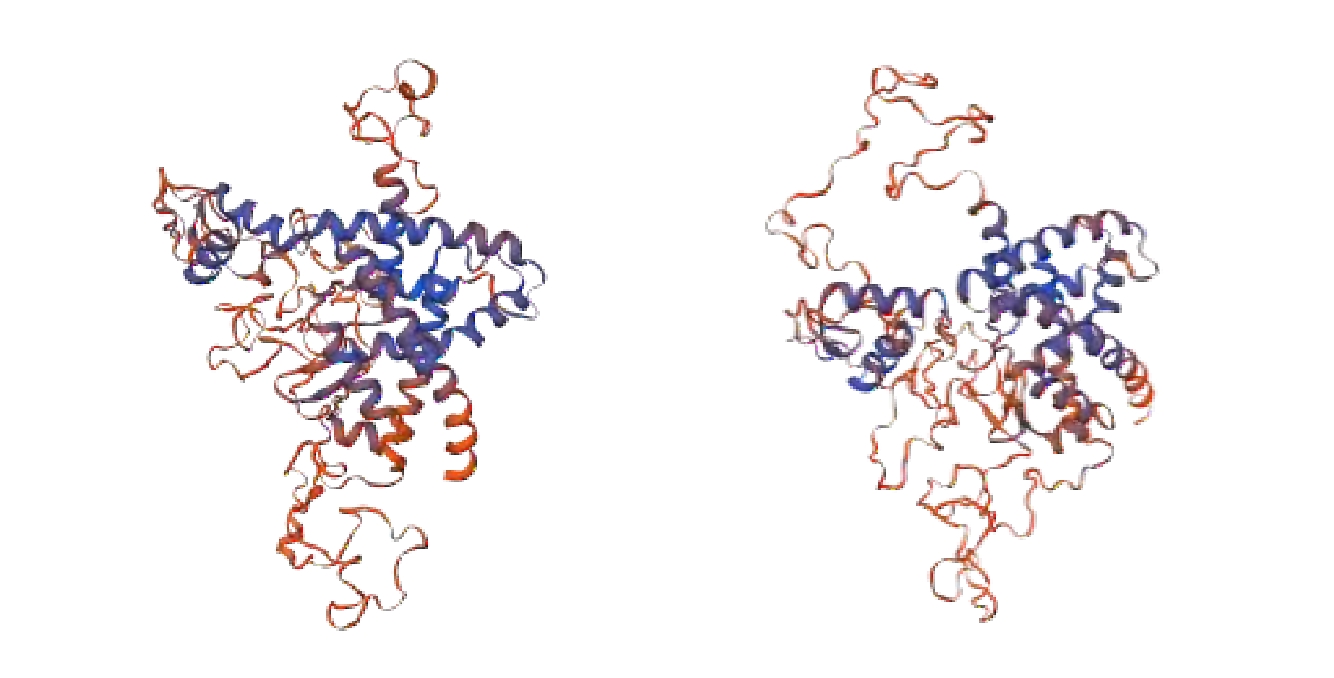| 1 |
LAZAR M A, HODIN R A, DARLING D S, et al. A novel member of the thyroid/steroid hormone receptor family is encoded by the opposite strand of the rat c-erbA alpha transcriptional unit[J].Mol Cell Biol, 1989,9(3): 1128-1136.
|
| 2 |
MARVIN K A, REINKING J L, LEE A J, et al. Nuclear receptors homo sapiens Rev-erb beta and Drosophila melanogaster E75 are thiolate-ligated heme proteins which undergo redox-mediated ligand switching and bind CO and NO[J]. Biochemistry, 2009, 48(29): 7056-7071.
|
| 3 |
YIN L, WU N, LAZAR M A. Nuclear receptor Rev-erb alpha: a heme receptor that coordinates circadian rhythm and metabolism[J]. Nucl Recept Signal, 2010, 8: e001.
|
| 4 |
CASTAGNÉ C, TERENZI H, ZAKIN M M, et al. Solution structure of the orphan nuclear receptor rev-erb beta response element by 1H, 31P NMR and molecular simulation[J]. Biochimie, 2000, 82(8): 739-748.
|
| 5 |
RAMAKRISHNAN S N, LAU P, BURKE L J, et al. Rev-erbβ regulates the expression of genes involved in lipid absorption in skeletal muscle cells[J]. J Biol Chem, 2005, 280(10): 8651-8659.
|
| 6 |
RAGHURAM S, STAYROOK K R, HUANG P, et al. Identification of heme as the ligand for the orphan nuclear receptors REV-ERBalpha and REV-ERB beta[J]. Nat Struct Mol Biol, 2007,14(12):1207-1213.
|
| 7 |
BUGGE A, FENG D, EVERETT L J, et al. Rev-erb and Rev-erb coordinately protect the circadian clock and normal metabolic function[J]. Genes Dev, 2012,26(7): 657-667.
|
| 8 |
PREITNER N, DAMIOLA F, LOPEZ-MOLINA L, et al. The orphan nuclear receptor REV-ERB alpha controls circadian transcription within the positive limb of the mammalian circadian oscillator[J]. Cell, 2002, 110(2): 251-260.
|
| 9 |
TRIQUENEAUX G, THENOT S, KAKIZAWA T, et al. The orphan receptor Rev-erb alpha gene is a target of the circadian clock pacemaker[J]. J Mol Endocrinol, 2004, 33(3): 585-608.
|
| 10 |
HARDING H P, LAZAR M A. The monomer-binding orphan receptor Rev-Erb represses transcription as a dimer on a novel direct repeat[J]. Mol Cell Biol, 1995, 15(9): 4791-4802.
|
| 11 |
MAKISHIMA M. Nuclear receptors as targets for drug development: regulation of cholesterol and bile acid metabolism by nuclear receptors[J]. J Pharmacol Sci, 2005, 97(2): 177-183.
|
| 12 |
GRANT D, YIN L, COLLINS J L, et al. GSK4112, a small molecule chemical probe for the cell biology of the nuclear heme receptor Rev-erbα[J]. ACS Chem Biol, 2010, 5(10): 925-932.
|
| 13 |
SOLT L A, WANG Y J, BANERJEE S, et al. Regulation of circadian behaviour and metabolism by synthetic REV-ERB agonists[J].Nature,2012,485(7396): 62-68.
|
| 14 |
LI C, ZHANG L, MA T, et al. Bisphenol A attenuates testosterone production in Leydig cells via the inhibition of NR1D1 signaling[J].Chemosphere,2021,263: 128020.
|
| 15 |
BONNELYE E, VANACKER J M, DESBIENS X,et al.Rev-erb beta, a new member of the nuclear receptor superfamily, is expressed in the nervous system during chicken development[J]. Cell Growth Differ, 1994, 5(12): 1357-1365.
|
| 16 |
CHO H, ZHAO X, HATORI M, et al. Regulation of circadian behaviour and metabolism by REV-ERB-α and REV-ERB-Β[J]. Nature, 2012, 485(7396): 123-127.
|
| 17 |
李翠梅. 双酚A通过生物钟基因Nr1d1影响睾酮合成的机制研究[D]. 杨凌: 西北农林科技大学, 2019.
|
| 18 |
ERCOLANI L, FERRARI A, DE MEI C, et al. Circadian clock: Time for novel anticancer strategies?[J]. Pharmacol Res, 2015, 100: 288-295.
|
| 19 |
GEKAKIS N, STAKNIS D, NGUYEN H B, et al. Role of the CLOCK protein in the mammalian circadian mechanism[J]. Science, 1998, 280(5369): 1564-1569.
|
| 20 |
YOO S H, KO C H, LOWREY P L, et al. A noncanonical E-box enhancer drives mouse Period2 circadian oscillations in vivo [J]. PNAS, 2005, 102(7): 2608-2613.
|
| 21 |
OHNO T, ONISHI Y, ISHIDA N. A novel E4BP4 element drives circadian expression of mPeriod2[J]. Nucleic Acids Res, 2007, 35(2): 648-655.
|
| 22 |
CHAIX A, ZARRINPAR A, PANDA S. The circadian coordination of cell biology[J]. J Cell Biol, 2016, 215(1): 15-25.
|
| 23 |
EVERETT L J, LAZAR M A. Nuclear receptor Rev-erb α: up, down, and all around[J]. Trends Endocrinol Metab, 2014, 25(11): 586-592.
|
| 24 |
HUNTER A L, PELEKANOU C E, ADAMSON A, et al. Nuclear receptor REVERBα is a state-dependent regulator of liver energy metabolism[J]. PNAS, 2020, 117(41): 25869-25879.
|
| 25 |
WANG J, LIU N, LIU Z, et al. The orphan nuclear receptor Rev-erb beta recruits Tip60 and HDAC1 to regulate apolipoprotein CIII promoter[J]. Biochim Biophys Acta, 2008, 1783(2): 224-236.
|
| 26 |
DELEZIE J, DUMONT S, DARDENTE H, et al. The nuclear receptor REV-ERBα is required for the daily balance of carbohydrate and lipid metabolism[J]. FASEB J, 2012, 26(8): 3321-3335.
|
| 27 |
LE MARTELOT G, CLAUDEL T, GATFIELD D, et al. REV-ERBalpha participates in circadian SREBP signaling and bile acid homeostasis[J]. PLoS Biol, 2009, 7(9): e1000181.
|
| 28 |
WOLDT E, SEBTI Y, SOLT L A, et al. Rev-erb-α modulates skeletal muscle oxidative capacity by regulating mitochondrial biogenesis and autophagy[J]. Nat Med, 2013, 19(8): 1039-1046.
|
| 29 |
ZHANG T P, ZHAO M J, LU D Y, et al. REV-ERBα regulates CYP7A1 through repression of liver receptor homolog-1[J].Drug Metab Dispos,2018,46(3):248-258.
|
| 30 |
XING C, HUANG X, ZHANG Y, et al. Sleep disturbance induces increased cholesterol level by NR1D1 mediated CYP7A1 inhibition[J]. Front Genet, 2020, 11: 610496.
|
| 31 |
MIGITA H, MORSER J, KAWAI K. Rev-erbα upregulates NF-κB-responsive genes in vascular smooth muscle cells[J]. FEBS Lett, 2004, 561(1-3): 69-74.
|
| 32 |
MAZZOCCOLI G, SOTHERN R B, GRECO A,et al. Time-related dynamics of variation in core clock gene expression levels in tissues relevant to the immune system[J].Int J Immunopathol Pharmacol,2011,24(4): 869-879.
|
| 33 |
CHANDRA V, MAHAJAN S, SAINI A, et al. Human IL10 gene repression by Rev-erbα ameliorates Mycobacterium tuberculosis clearance[J]. J Biol Chem, 2013, 288(15): 10692-10702.
|
| 34 |
ZVONIC S, PTITSYN A A, CONRAD S A, et al. Characterization of peripheral circadian clocks in adipose tissues[J]. Diabetes, 2006, 55(4): 962-970.
|
 )
)
 )
)
